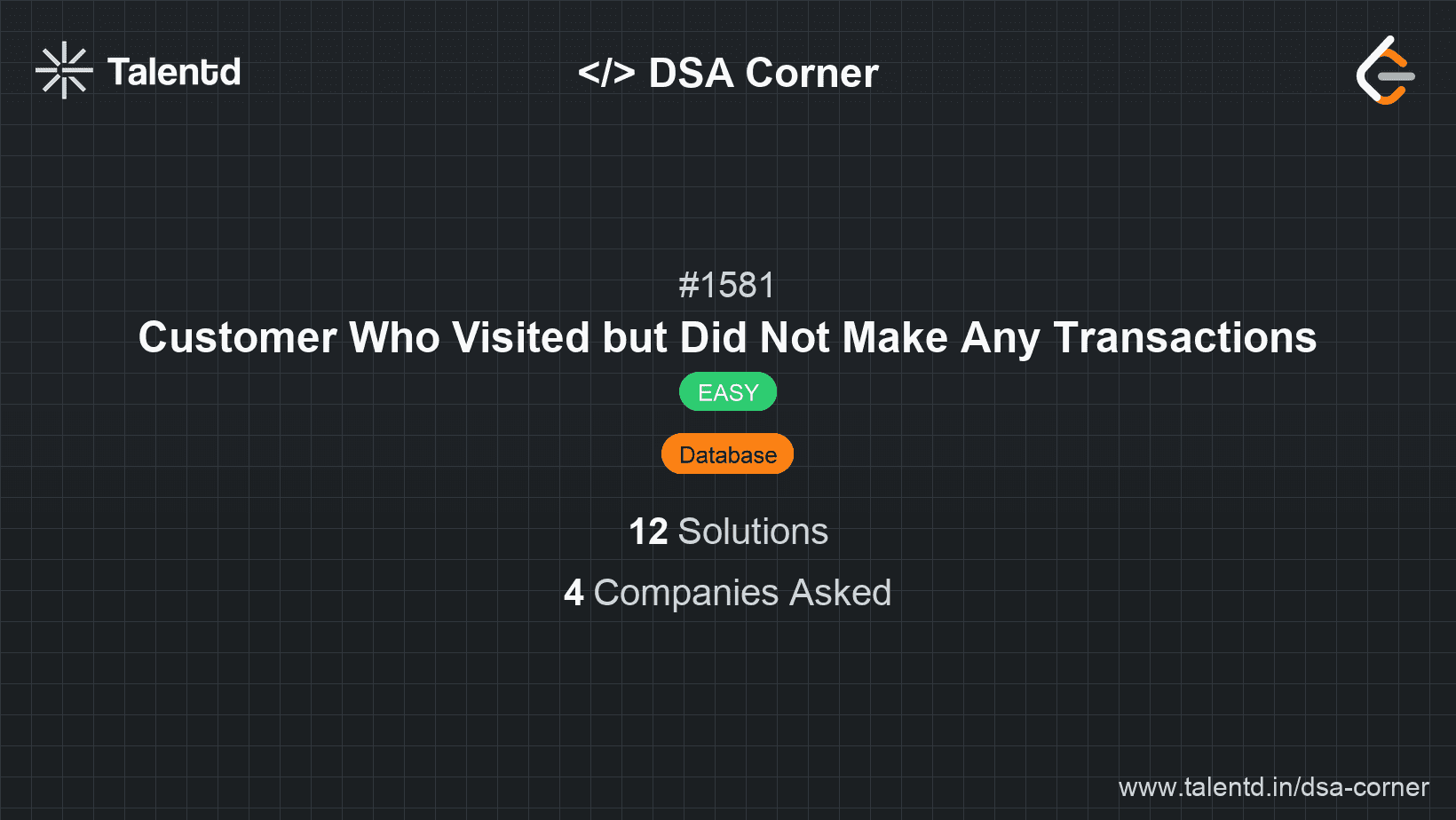
Sponsored
Sponsored
This approach utilizes SQL LEFT JOIN to find all visits that do not have corresponding transactions and GROUP BY to count the occurrences.
Time Complexity: O(N + M), where N is the number of rows in the Visits table and M is the number of rows in the Transactions table.
Space Complexity: O(K), where K is the number of unique customer_id entries in the result set.
1// C does not directly handle SQL queries, but you can use a library like SQLite3 in C to execute the SQL queries.Since C is a lower-level language and does not natively support SQL operations, using a library like SQLite3 allows you to perform database operations. Correct database connections and execution functions are required to run the query. The SQL query will filter and group data appropriately within the database.
This approach uses a subquery with NOT EXISTS to find all visits by customers that do not appear in the Transactions table.
Time Complexity: O(N * M), where N is the number of rows in the Visits table and M is the number of rows in the Transactions table.
Space Complexity: O(K), where K is the number of unique customer_id entries in the result set.
1#include <iostream>
#include <string>
#include <sqlite3.h>
void executeSQL(const std::string &query) {
sqlite3 *db;
char *zErrMsg = nullptr;
int rc;
rc = sqlite3_open("your_database.db", &db);
if(rc) {
std::cerr << "Can't open database: " << sqlite3_errmsg(db) << std::endl;
return;
}
rc = sqlite3_exec(db, query.c_str(), callback, 0, &zErrMsg);
if(rc != SQLITE_OK) {
std::cerr << "SQL error: " << zErrMsg << std::endl;
sqlite3_free(zErrMsg);
}
sqlite3_close(db);
}
int main() {
std::string query = "SELECT customer_id, COUNT(visit_id) AS count_no_trans FROM Visits WHERE NOT EXISTS (SELECT * FROM Transactions WHERE Visits.visit_id = Transactions.visit_id) GROUP BY customer_id;";
executeSQL(query);
return 0;
}
// Note: Make sure to implement the callback function and handle the database initialization and cleanup properly. The query provided is SQL and should be run on a SQL-compliant database like SQLite3.In C++ using a SQLite3 database, the code opens a connection, runs a query embedding a subquery with the NOT EXISTS clause, and outputs the results. This strategy efficiently identifies visits without transactions, utilizing SQL capabilities within the C++ environment.